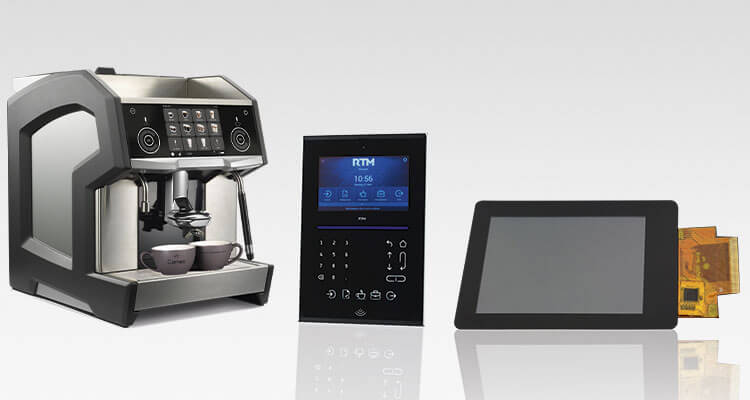Comparing capacitive and resistive touchscreen technologies.
Whilst designing a touchscreen, you must decide what type of touch technology will be suitable for the application. When it comes to a choice between capacitive and resistive technology, both have pros and cons. The two technologies having several constructional differences.
A resistive touchscreen consists of two thin layers of material with a small gap in between, with spacer dots printed on one of the layers to keep them separated. The top layer is usually a clear plastic material (such as PET-film), while the bottom layer is made up of either a second layer of plastic material or a rigid material such as glass.
Capacitive touchscreens consist of transparent, conductive layers (usually ITO) with no spacer between. Instead, a type of glue is used as no electrical contact is needed between the layers. The layers can be made of plastic, glass, or a mixture of both.
Compared to resistive touchscreens, which depend on electric contact by mechanical pressure, capacitive touchscreens use the natural conductivity of the human body. Depending on where the application will be used, and the exterior conditions will ultimately determine which touchscreen technology you should use.
Resistive touchscreens are widely used in manufacturing, medical environments, and ATMs, because they have a lower manufacturing cost, are more resistant to dirt and water and significantly reduce the risk of accidental touches (pressure needed to make the contact).

Both technologies have their pros and cons. If you are waiting to incorporate either technology into an interface design, please contact us via the form below or call +44 (0)1477 505206, and we can help advise you on the best choice for the project.
